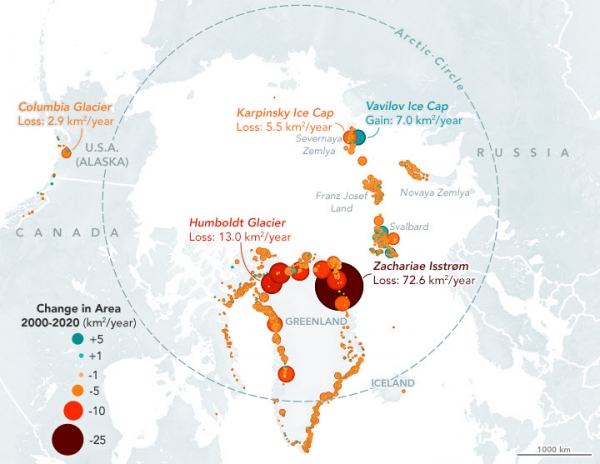Across the Northern Hemisphere, more than 1,700 glaciers ultimately dip their icy snouts into the ocean. Many of these glacier fronts are floating, with some spreading out into wide, flat ice shelves. Others are grounded, connected to the seafloor below. Almost all of them are retreating.
That is the conclusion of recent research by William Kochtitzky and Luke Copland, glaciologists at the University of Ottawa. Using images from Landsat and Terra satellites, the researchers manually outlined the position of each glacier’s front in 2000, 2010, and 2020. They found that 85 percent of the glaciers had retreated during these two decades, accounting for a total loss of about 7,500 square kilometers (2,900 square miles) of ice.
The map above shows where those changes occurred. Areas marked with large red dots lost the most ice, and large blue dots gained the most. Most of the losses (62 percent) come from outlet glaciers along the periphery of Greenland’s enormous ice sheet. Notice the especially large red dot in northeast Greenland. This is Zachariae Isstrøm, which lost 1,453 square kilometers (561 square miles) of ice between 2000-2020.
Continue reading at NASA Earth Observatory
Image via NASA Earth Observatory


